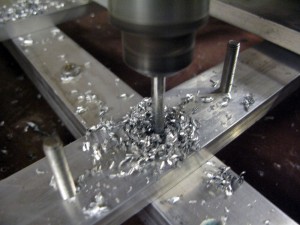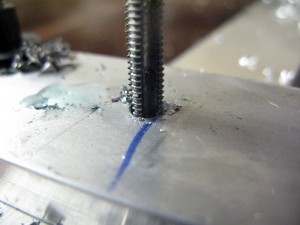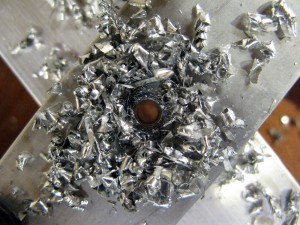 Like a drunk tiptoeing into his AA meeting with actual quitting on his mind, website I’m finally ready to quit breaking taps – and pay attention to all the solid advice I’ve been getting along the way.
Like a drunk tiptoeing into his AA meeting with actual quitting on his mind, website I’m finally ready to quit breaking taps – and pay attention to all the solid advice I’ve been getting along the way.
Tonight, more about I took it all in hand and put it to work on my one surviving 6mm tapping tool – and the dozen-plus very serious holes I had left to tap:
- The machinist recommended I countersink the holes and use cutting fluid … But I had a long way to go – the last 8 holes in the stringers for Keyboard 3, this web plus the remaining three very deep holes in Keyboard 1’s crosspiece – each of them through a thick, 3-layer sandwich of aluminum.
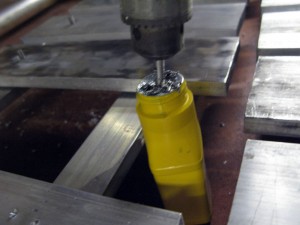
I started with the drill …Straight down, through three layers of aluminum, half an inch thick each. Nice, clean, smooth holes. Thanks to the guys at Baller Hardware for assuring me that “any light oil ought to do it” after I realized the only actual tapping fluid they had comes in a huge industrial jug.
I chose 2-stroke engine oil.Then, many thanks to Jeremy and others over at CrashSpace for the invaluable reminder of something I forgot since tapping engine heads more than 20 years ago: For every three or four turns of the tap as you cut the threads, you have to back the tap out a turn or three, to clear out the cuttings that might bind up its tip …
I also followed my own instincts after comparing notes with Vinny, my oldest friend in the world and an inveterate shade-tree mechanic: “You know that point where you *know* you’re turning too hard, but you keep going, and then it snaps” – I tried to stop myself every time I felt the tap binding up to the ppoint where it might snap … and I backed the thing all the way out, cleaned off the metal cuttings, and resumed tapping …
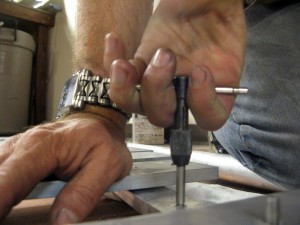
And lo and behold, every single hole was tapped cleanly and safely … and the tap survived.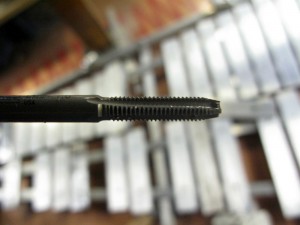
This let me proceed to building Keyboard 2 …
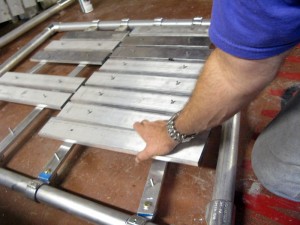
… and Keyboard 3. We’ll be capping off the mounting screws with locknuts – and god knows what all else – very, very soon.

